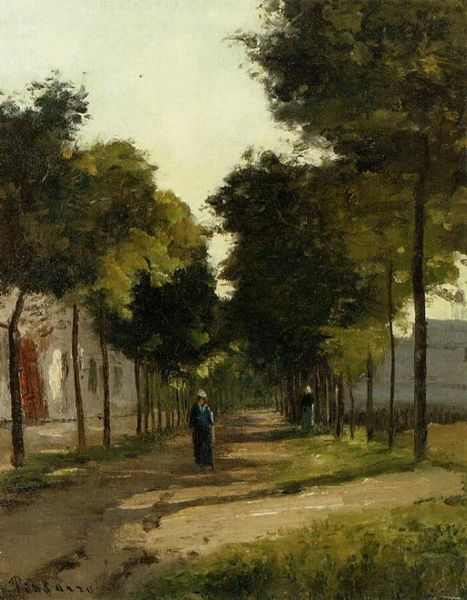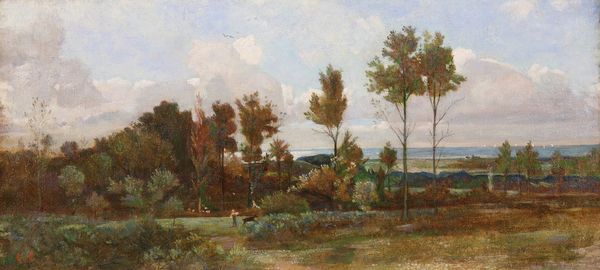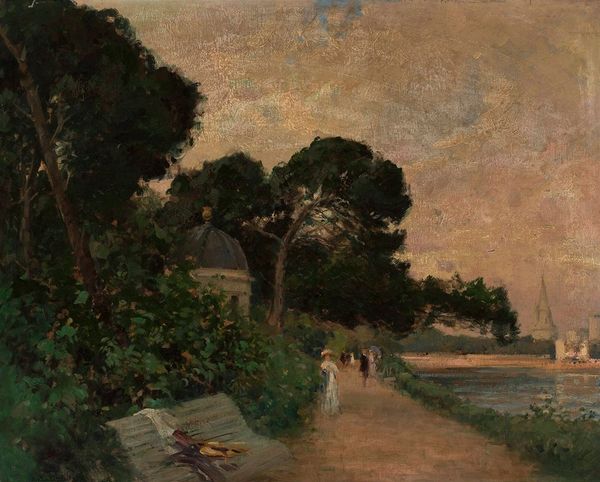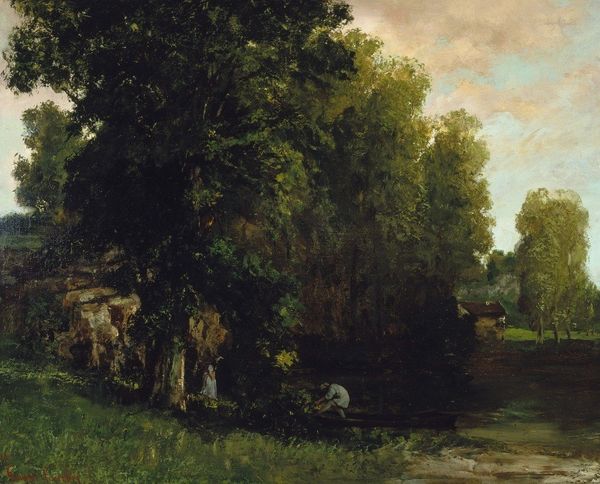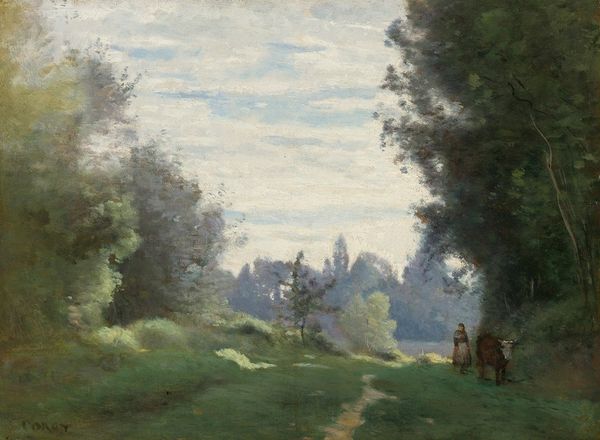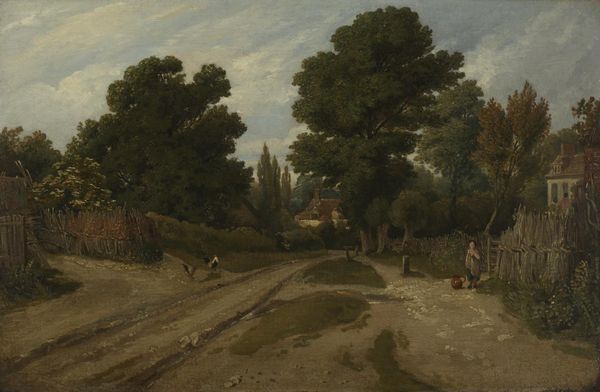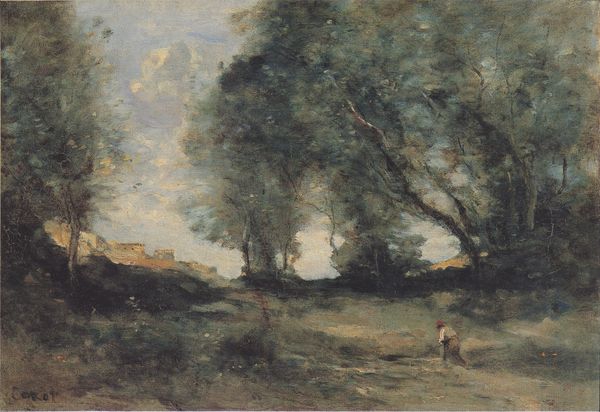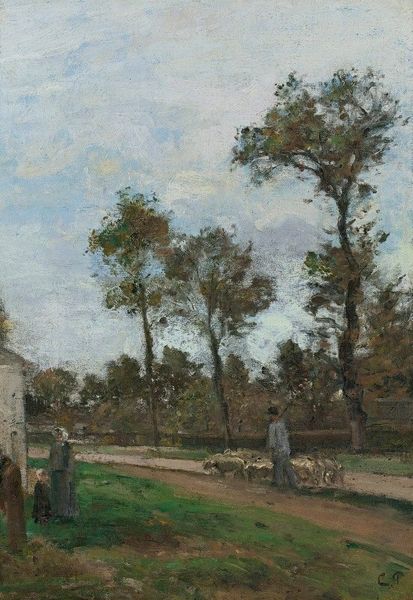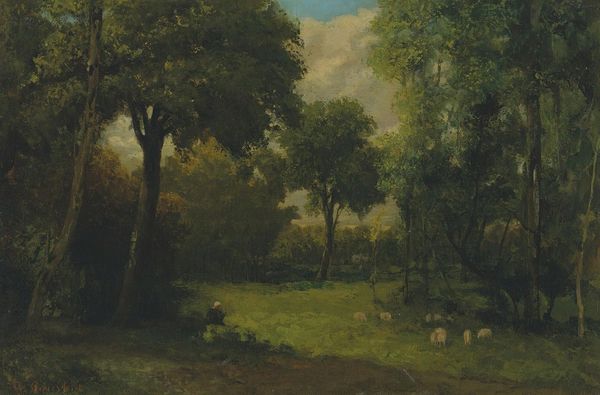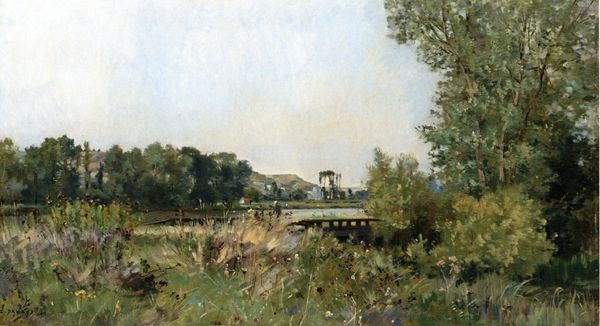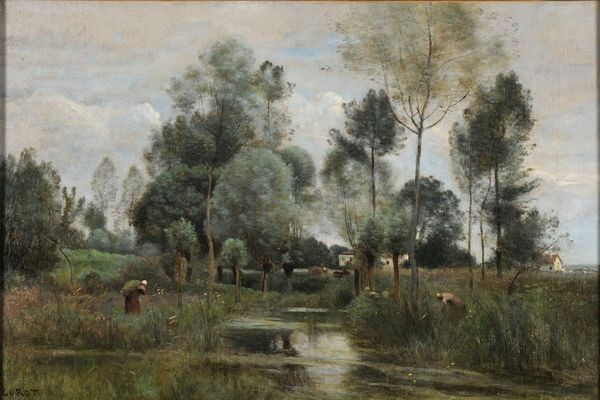
Copyright: Public Domain: Artvee
Curator: Let's turn our attention to this oil painting, Mariánsky Dvor in Košice, by Ľudovít Ňordák, created sometime between 1910 and 1915. What's your initial reaction to the work? Editor: It feels instantly calming. The soft light, the muted greens and browns... there's a definite sense of peace. It's all so subtly constructed. Curator: Indeed. Structurally, note how Ňordák uses the framing of the trees and architecture to draw our eye through the courtyard towards the more distant landscape. Consider too the materiality: the visible brushstrokes, the impasto suggesting texture in the foliage. These formal elements contribute significantly to the image's overall pastoral theme and post-impressionistic leaning. Editor: I'm drawn to the figure with the broom. Who is she? And what does her labor represent? Post-Impressionism focused so much on light and form; is it downplaying how the lives of ordinary laborers are caught within larger systems of labor, even in idyllic scenes such as this one? Curator: That’s a fantastic point. Consider the role of domestic labor in maintaining such spaces. While we’re invited to see a peaceful escape, Ňordák also depicts the constant effort required to create this illusion. How much of the composition relies not only on color and light but the often invisible workforce enabling this specific visual style to develop? Editor: It seems that way to me! Also, this piece demonstrates how artists were beginning to push against traditional forms and subject matter while capturing moments of local culture. We might ask ourselves where was this canvas produced and from where does this brush originate and how did those influence Ňordák's overall form, not simply from an intellectual pursuit of form itself? Curator: An excellent reminder to think critically about the production of even the most serene-seeming artwork. The materiality here extends beyond pigment and brushwork, opening up questions about consumption, display, and how such “peaceful” images become part of commodity culture. Editor: Ultimately, my viewing shows how powerful an exploration of form can be, in turn raising bigger questions, rather than limiting us through formal analysis. I certainly appreciate your focus on its context as well! Curator: And I, yours on formal elements. Considering both deepens our comprehension.
Comments
No comments
Be the first to comment and join the conversation on the ultimate creative platform.
